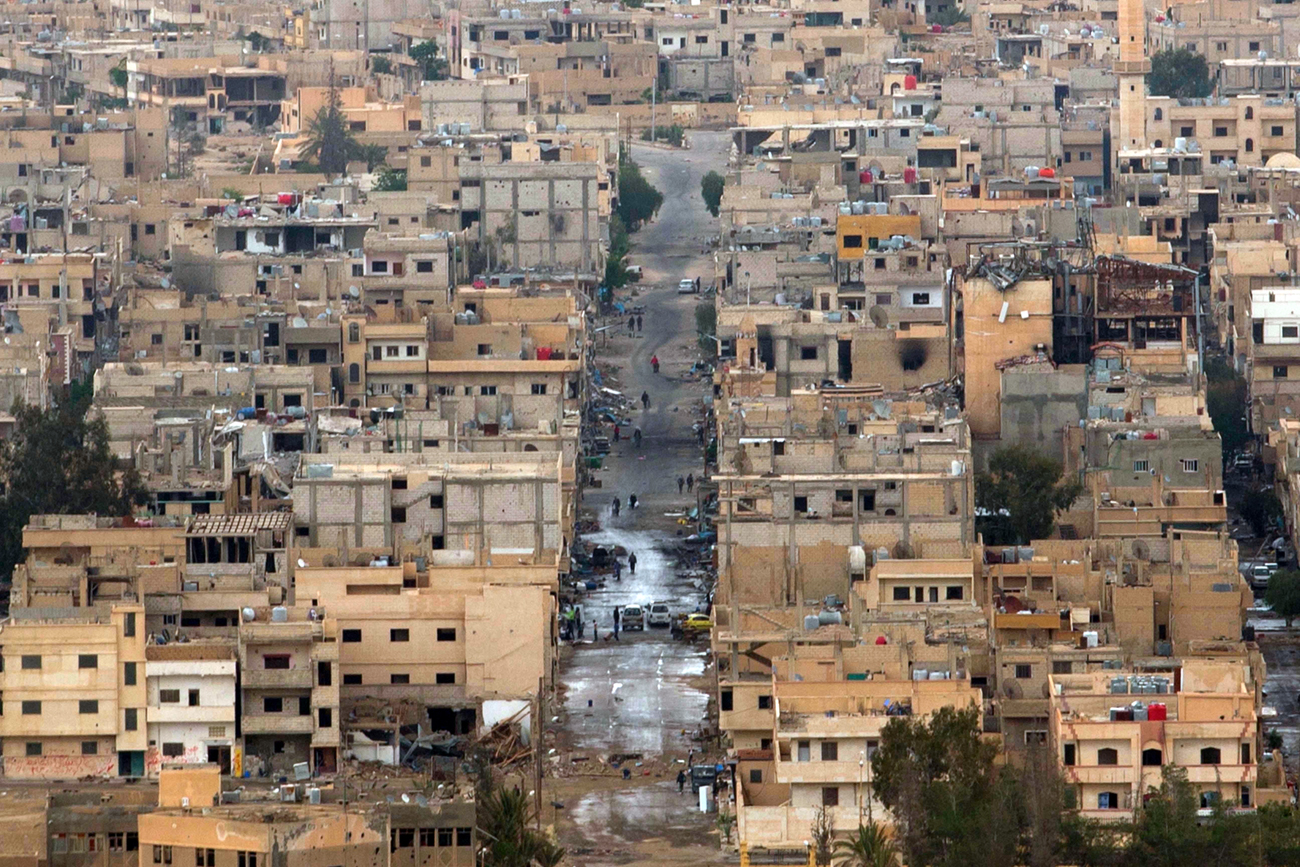ISIS recaptures Palmyra: Strategic defeat or miscalculation by Russia?

According to the military, ISIS has over 4,000 militants fighting in Palmyra as well as rocket artillery, armored vehicles and car bombs.
APIslamic State (ISIS) militants have taken advantage of the involvement of Syria’s army and the Russian air force in Aleppo to launch a counteroffensive in central Syria, retaking the ancient city of Palmyra, whose previous liberation from terrorist control Moscow had trumpeted as one of the key successes in its Syrian campaign.
On Sunday Dec. 11, the governor of the province of Homs, Talal Barazi, announced that ISIS had regained control over Palmyra. The terrorist offensive began on Dec. 8 as government troops closed in on victory in Aleppo, where they already control 96 percent of the city.
The militants’ counteroffensive has forced the Russian air force to urgently shift the focus of its attention to Palmyra.
In the early hours of Dec. 11, air strikes carried out by Russian frontline and long-range aviation (with Tu-22M3 bombers involved in the operation) killed over 300 militants and destroyed 11 tanks and infantry fighting vehicles, the Russian Defense Ministry said.
According to the military, ISIS has over 4,000 militants fighting in Palmyra as well as rocket artillery, armored vehicles and car bombs.
A blow to prestige
ISIS was thrown out of the ancient city on Mar. 27, 2016 with support from Russian troops in an operation trumpeted as one of the main successes of Russia’s Syria campaign. To mark the occasion, the orchestra of St. Petersburg’s Mariinsky Theater, led by renowned conductor Valery Gergiev, gave a concert in the Palmyra amphitheater built by the Romans in the 2nd century A.D.
The loss of Palmyra has dealt a blow to Russia’s prestige, former Russian Chief of General Staff Gen Yury Baluyevsky said in an interview with the Interfax news agency.
However, Andrei Suzdaltsev, a senior research associate at the Higher School of Economics in Moscow, disagrees: It is a tactical rather than a strategic defeat, which will not have an impact on the overall course of the civil war.
“Now Russia’s opponents abroad will present the situation as Moscow having dropped the ball. Yet the West also does not have much to boast of in its fighting for Mosul. The question now is how our politicians and those from abroad will play their cards,” Suzdaltsev told RBTH.
Why was Palmyra lost?
According to Yury Baluyevsky, Palmyra fell into the militants’ hands again because the leadership of the Russian air force was not vigilant enough: They should have anticipated steps like these from ISIS.
“The Syrians probably do not have the capabilities that we have. Where were we looking to allow Palmyra to be taken [by the militants]?” said the general.
The military experts interviewed by RBTH argue that ISIS managed to recapture Palmyra largely thanks to the “humanitarian pauses” imposed during the conflict to allow civilians to escape.
“I do understand it that it is necessary to ensure safety for civilians, to remove them from under fire. But when these humanitarian pauses last weeks, militants manage to recuperate,” said Baluyevsky.
“Constant ceasefires allow the militants to regroup, to restore supply and communication channels, and after that to launch a counteroffensive,” Dmitry Safonov, a military observer with the Izvestiya newspaper, told RBTH.
During the last humanitarian pause in Aleppo, over 1,500 people left the city, Safonov continued, adding that it appeared most of them were militants. “They did not go to Iraq or Turkey, they remained in Syria,” he concluded.
When will Palmyra be recaptured?
Baluyevsky believes that the Russian and Syrian military will be able to regain control over Palmyra, though according to Safonov, fighting for the city will turn into “a bloodbath” because Russian frontline bombers will not be carrying out strikes against residential areas, only against the suburbs, and Islamic State militants will soon flee from there.
“Fighting will once again be taking place within the city boundaries. The residential districts of Palmyra consist of low-rise buildings standing close to each other. Each square kilometer of that land will have to be paid for with the blood of Syrian soldiers and civilians, whom the militants will be using as a human shield,” said Safonov.
The active phase of the fighting is likely to take place from mid-December to late January, Anatoly Tsyganok, the head of the Center of Military Forecasts, an associate member of the Russian Academy of Military Sciences, told RBTH.
“After that and till mid-March, there will be heavy sandstorms in Syria, which will considerably slow down the course of the hostilities in the city and its suburbs,” he said.
According to Tsyganok, during the same period in 2016, the Russian air force considerably cut back on front-line aviation sorties and used the time for maintenance and repairs.
Ministry: Militants broke through into Palmyra using suicide car bombs>>>
Subscribe to get the hand picked best stories every week
All rights reserved by Rossiyskaya Gazeta.
Subscribe
to our newsletter!
Get the week's best stories straight to your inbox

